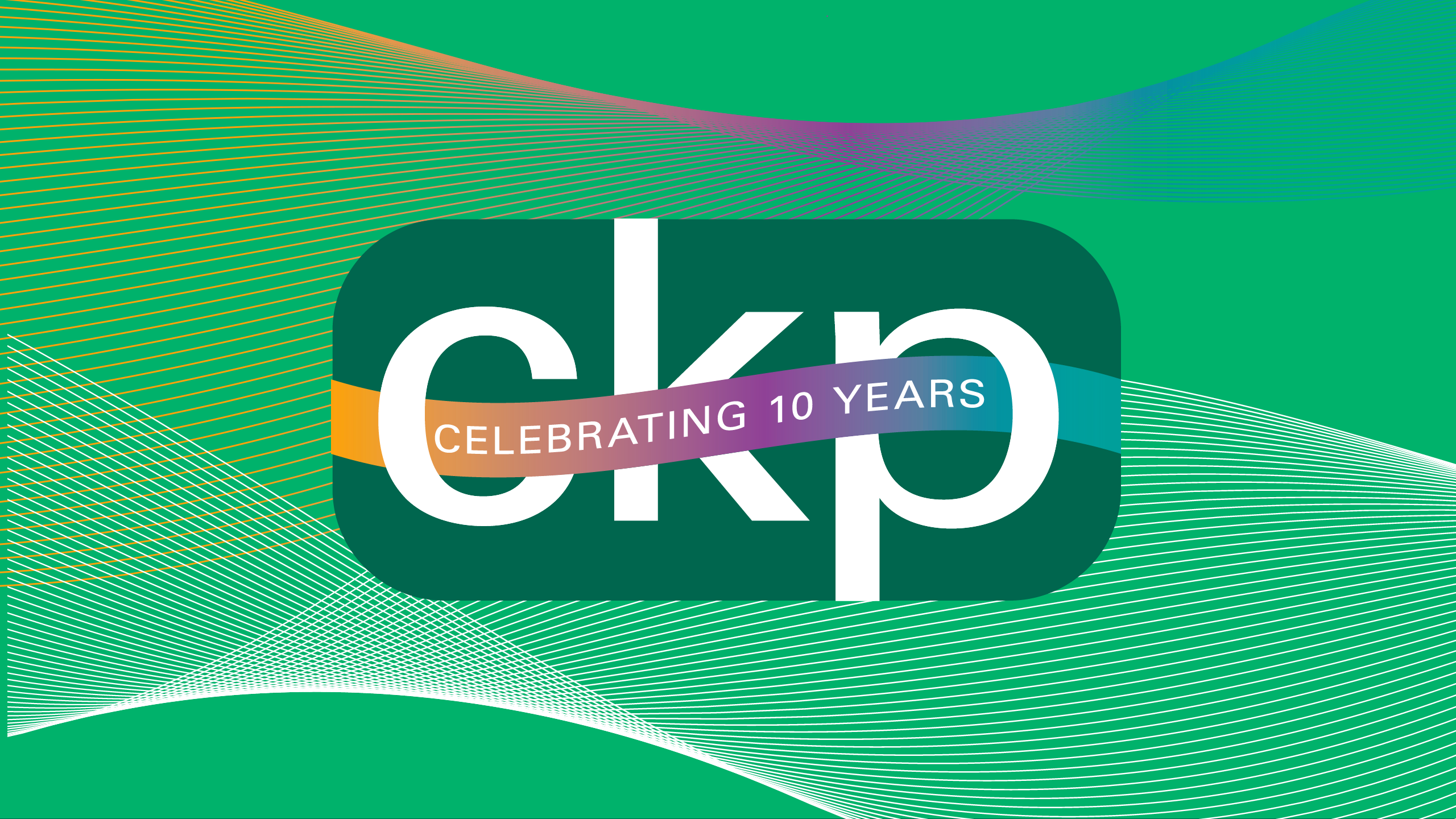A Resolution You Can Stick to: A 6-Step Guide to Setting Communications Goals in the New Year

In the business world, setting and achieving goals is essential for success, especially when it comes to communications, an often overlooked and undervalued component of any business, at least until it suddenly becomes very important. Whether you’re leading a marketing campaign, refining your internal messaging, leading your company through a period of change, or launching a brand-new strategy, great communications provides the foundation for focused efforts and measurable results.
But as essential as communications goal setting is, sticking to those goals throughout the year remains a challenge as new challenges arise and priorities shift. The obstacles are all too familiar and pose a real barrier to success:
Common Goal-Setting Obstacles
- Unclear Objectives: Goals that are too vague or poorly defined make it difficult to measure progress or know when success has been achieved.
- Overwhelming Scope: Setting too many goals—or goals that are overly ambitious—leads to burnout and a lack of focus.
- Inconsistent Follow-Through: Initial momentum flags over time, leaving goals deprioritized or outright abandoned.
- Lack of Metrics: Without clear ways to measure progress, even the best intentions can stall, and without a tangible return on investment, communications are often the first thing to suffer when it’s time for belt tightening.
- Insufficient Buy-In: When teams don’t fully understand or support the goals, alignment and accountability suffer.
Tackling these obstacles requires a thoughtful mix of thoughtful planning, effective tools, and ongoing effort to maintain enthusiasm and results. This guide will walk you through strategies to set meaningful communication goals, maintain momentum, measure success, and secure buy-in from across your organization—all critical components for achieving sustainable results.
1. Setting the Right Goals
The foundation of successful goal setting is clarity. Meaningful goals need to be specific, actionable, and aligned with your broader business objectives. Here’s how to start:
Use a Framework
Frameworks exist because enough people tried, failed, reworked, improved, and repeated and then told their friends about it using an acronym, so don’t reinvent the wheel. Proven frameworks like SMART (Specific, Measurable, Achievable, Relevant, Time-bound) and OKRs (Objectives and Key Results) provide a structured approach to goal setting that can save you time, aggravation, and money.
For example: Instead of setting a vague goal like “improve our social media performance,” a SMART goal might be, “Increase Instagram engagement by 20% by Q2 through twice weekly reels.”
Align with Business Priorities
Unless you’re the circus, your business priority is probably not generating “likes” on a photo of a bear a bicycle. And if your business is in animal welfare, you will get engagement, but they won’t be likes. Your communication goals should directly support your organization’s strategic objectives however you’ve defined them.
Ask yourself:
• How does this goal contribute to revenue, brand equity, or operational efficiency?
• Are these goals solving a real problem or meeting a clear need?
Prioritize and Focus
It’s easy to overwhelm yourself, your audience, and especially your team. Avoid setting too many goals at once. Focus on three to five key objectives that will have the most significant impact on your organization. If other things really are that important, they’ll be in the next iteration of your communications goal setting. Follow the old maxim: if everything is important then nothing is important. Decide what’s most important and start there.
2. Strategies to Maintain Momentum Throughout the Year
Once goals are set, the challenge becomes keeping them alive and on track throughout the year. Communications have a funny way of fading into the background in the face of other priories that look more urgent on an Excel spreadsheet. Maintaining momentum requires intentional, consistent effort and smart strategies.
Break Goals into Smaller Milestones
Large goals can feel daunting, so break them into smaller, manageable milestones. For instance:
If your goal is to launch a new thought leadership campaign by year-end, create quarterly milestones: content brainstorming, asset creation, stakeholder alignment, and final launch preparation. Then visualize the plan on a slide so it becomes a real thing you can point at. Milestones are in indication of distance. Remind your team where you are on the journey on a regular basis.
Schedule Regular Check-Ins
Accountability is key. Schedule monthly or quarterly check-ins with accountable and responsible parties to evaluate progress, troubleshoot challenges, and adjust timelines or strategies as needed. Communications documents need to be flexible. Check-ins create a great opportunity to course correct.
Did you know that simply sharing your goals with someone makes you 65% more likely to achieve them? And with regular check-ins, that jumps to 95%, according to Forbes. Accountability isn’t just about hitting goals; it’s about building trust with yourself and others while creating a culture where everyone thrives.
Celebrate Small Wins
If you’re not great at celebrating wins, you’re not alone. It’s easy to fixate on what’s wrong while taking for granted what’s going right. Communications goal setting creates an opportunity for little celebrations along the way. Recognizing incremental achievements keeps teams motivated and maintains enterprise momentum. Celebrate the completion of milestones, even if the ultimate goal is still months away.
Leverage Tools for Accountability
Use project management tools like Asana, Trello, or Monday.com to assign tasks, set deadlines, and track progress. Even a simple shared spreadsheet can help ensure everyone stays aligned. But be aware that tools multiply like gremlins and can cause just as much havoc with your business. Revise and combine whenever possible. Everyone has a tool for everything; some tools do many things. Identify core tools then stick with them, and do your best to resist the shiny object. There’s always a shiny object.
3. Measurement Techniques: Knowing What Success Looks Like
Few things are as notoriously difficult to measure reliably as communications outcomes. Ask any career marketer or PR professional. But without measurement, you can’t know whether you’re on track to achieve your goals, so we must try. Clear metrics not only help you evaluate progress but also identify opportunities for improvement.
Define Key Performance Indicators (KPIs)
For each goal, define KPIs that are specific, measurable, and tied to outcomes. Examples include:
• For External Campaigns: Metrics like reach, engagement rate, conversion rate, sentiment, or lead generation.
• For Internal Communications: Employee engagement scores, intranet traffic, or completion rates for training modules.
Use Data Wisely
We are adrift in a sea of data. Collecting data is only useful if you analyze and act on it. Collecting data for data’s sake— a common mistake we’re all guilty of from time to time—is a waste of time and energy. Use dashboards and reporting tools to visualize progress and identify trends. For example:
• Tools like Google Analytics and HubSpot can help you track campaign performance.
• Internal tools, such as survey platforms—we’re partial to Survey Monkey— can measure employee sentiment or feedback. If one of your goals is improving morale and reducing turnover, consider a twice-annual survey.
Compare Against Benchmarks
Set benchmarks based on past performance or industry standards to give context to your results. Sometimes we’re starting from scratch or pioneers in a particular area. Begin with research. In the absence of apples-to-apples comparisons, consider oranges or bananas, at least to get started.
4. Securing Organizational Buy-In
Even the most well-crafted goals will fall short without buy-in from key stakeholders, especially in a period of change management. Ensuring alignment across your organization is critical for execution.
Involve Stakeholders Early
From leadership to frontline employees, involve stakeholders in the goal-setting process. This fosters a sense of ownership and ensures the goals align with the organization’s priorities. Employees frequently clamor for greater transparency, especially if they spend a lot of time on their LinkedIn feed. This is a great way show how something in the company works, how it’s going to be measured, and what it’s intended to accomplish.
Communicate the “Why”
Though we prefer the more punchy “so what?” explain the reasoning behind each goal and its potential impact on the organization. When people understand the “why,” they’re more likely to stay committed. Only their mom gets to say “because I said so.”
Clarify Roles and Responsibilities
Ensure every team member knows their role in achieving the goal. Use clear communication and assign accountability to avoid confusion or duplication of efforts. Consider developing visual accountability structures with clear responsibilities outlined. If you’ve developed a full communications plan—and really, you should— remember that if everyone is accountable then no one is. Clear identify and communicate where the buck stops and make sure everyone else knows which part they’re going to play in reaching your goals.
Lead by Example
Leadership should model commitment to the goals by actively participating in progress reviews, removing roadblocks, contributing content (like this blog) and celebrating wins. Communications are a team sport, and no one wants missives from the ivory tower.
5. Balancing Ambition with Realism
Ambitious goals can be inspiring, but they need to be grounded in reality to be achievable. Time and resources are finite (even if you pay overtime). Striking the right balance ensures that your goals motivate rather than overwhelm. This may take some practice, but over time, you’ll learn how to scale up and scale down depending on the circumstances. If you’re reading this, it’s likely because you need to be a bit more ambitious or got out over your skis.
Set Stretch Goals with a Safety Net
Stretch goals encourage innovation, but they should be paired with contingency plans. For example:
If your goal is to double your email list by year-end, plan for alternative strategies like paid ads or partnerships in case organic growth slows. Falling short of goals can be demoralizing, especially if the tactics are untested. Be prepared to adapt then adapt again.
Recognize Resource Constraints
Assess the time, budget, and talent available to execute your goals. If resources are limited, scale your objectives accordingly. Depending on your organization’s resources and needs, outside help is available. No, your CFO probably won’t like this suggestion, but outside specialists can make a big difference even if you have an internal team.
Learn from Past Performance
Review what worked—and what didn’t—in previous years. Use those insights to set goals that are both challenging and attainable.
6. Building a Culture of Goal Achievement
Ultimately, sticking to communications goals often requires a cultural shift within your organization. Few things are taken for granted to the degree communications are. After all, we can all write an email, right? Yes, the CEO could do it. But the CEO shouldn’t do it. Everyone should. When communications goal setting and execution become ingrained in your team’s DNA, success becomes second nature.
Foster Collaboration
Goals shouldn’t exist in silos (and unless you’re in farming, construction, or mining, very little should be in silos). Encourage cross-departmental collaboration to share ideas, resources, and accountability.
Create Transparency
Make progress visible to everyone in the organization. Dashboards, updates in team meetings, and regular reports keep everyone informed, excited, and engaged.
Encourage Feedback
Create a feedback loop where team members, partners, and customers can share insights, challenges, and suggestions for improvement. This not only improves execution but also strengthens buy-in and creates greater collaboration.
Moving Forward in 2025
Sticking to goals in 2025 is about more than just determination—it’s about intentional planning, ongoing effort, and clear communication. By setting realistic objectives, maintaining momentum, measuring success, and fostering organizational alignment, you can turn aspirations into measurable achievements.
As the year unfolds, remember that adaptability is part of the process. Goals can and should evolve as circumstances change. With the right strategies in place, 2025 can be the year you not only set meaningful communication goals for your organization, but see them contribute to your success.
Enjoying this post? Dive deeper into the topic with Building a Remote Team: How to Create a Culture of Trust and Accountability
More Blog Posts

Let’s be real—communication at work is kind of like a group chat. Some people over-share, some barely respond, and others...

Once upon a time, PR meant faxing a press release and hoping someone, somewhere, had paper in their machine. All...

Employee Appreciation Day, recognized on the first Friday in March, will be celebrated this year on March 7. It is...

1. The Power of Sustained Impression (Or: Stop Passing Out at First Dates) Let me tell you about a date...

